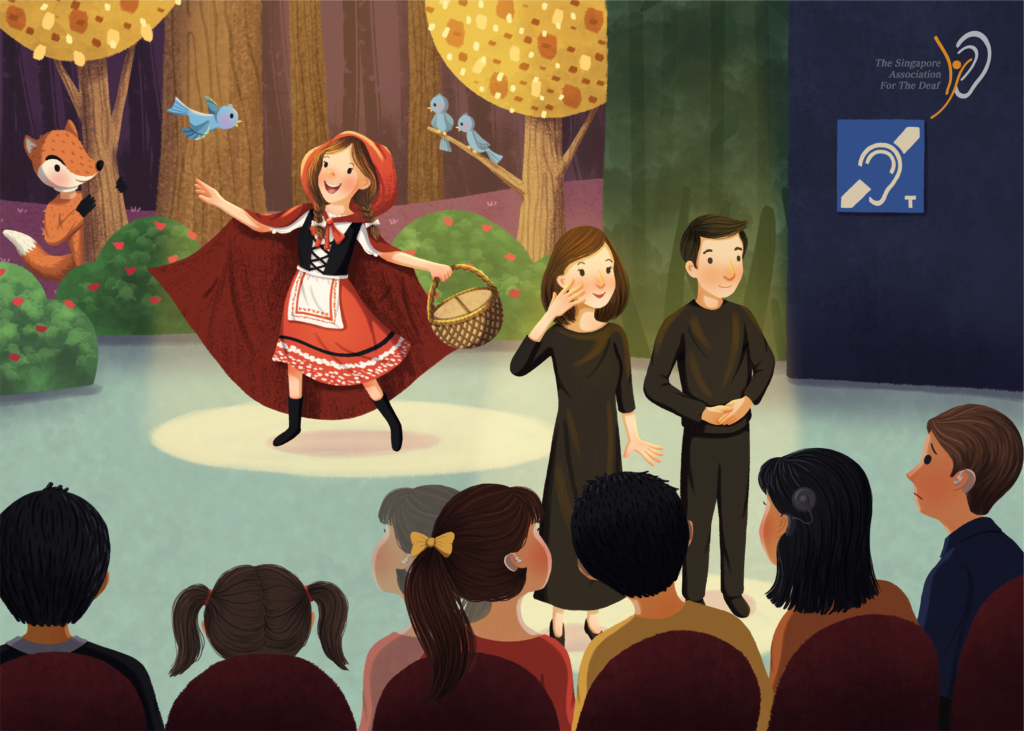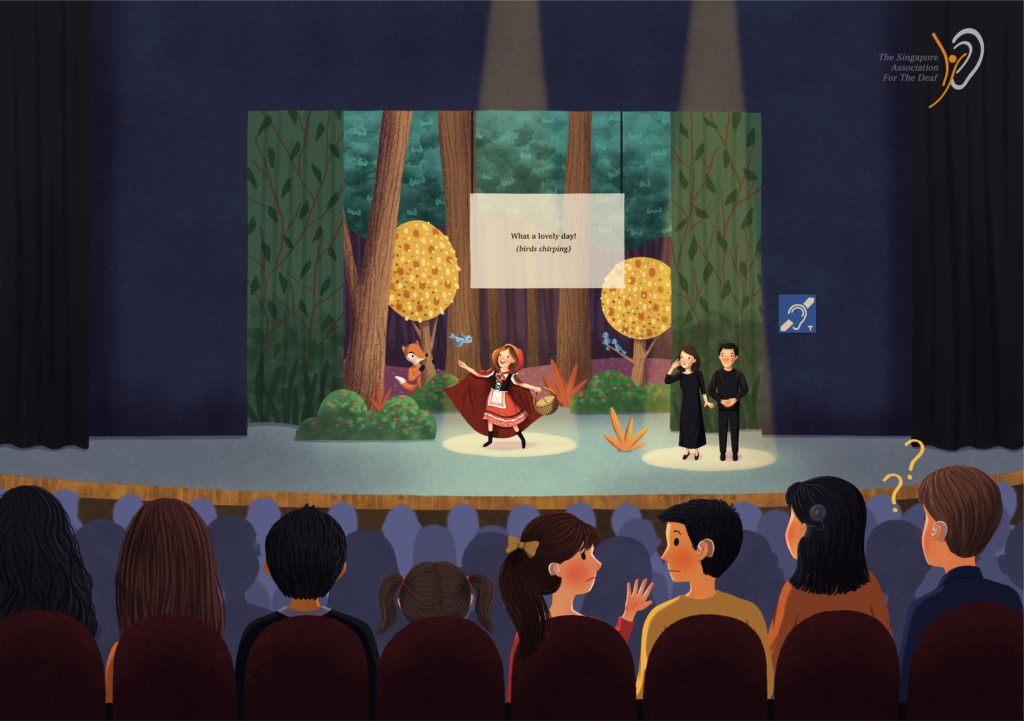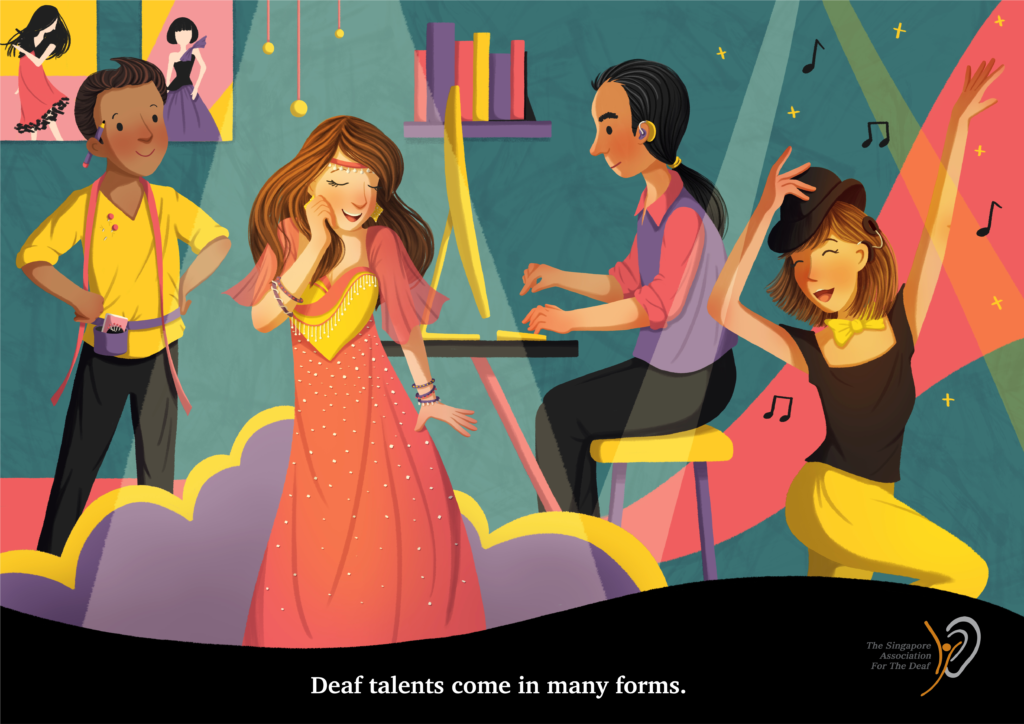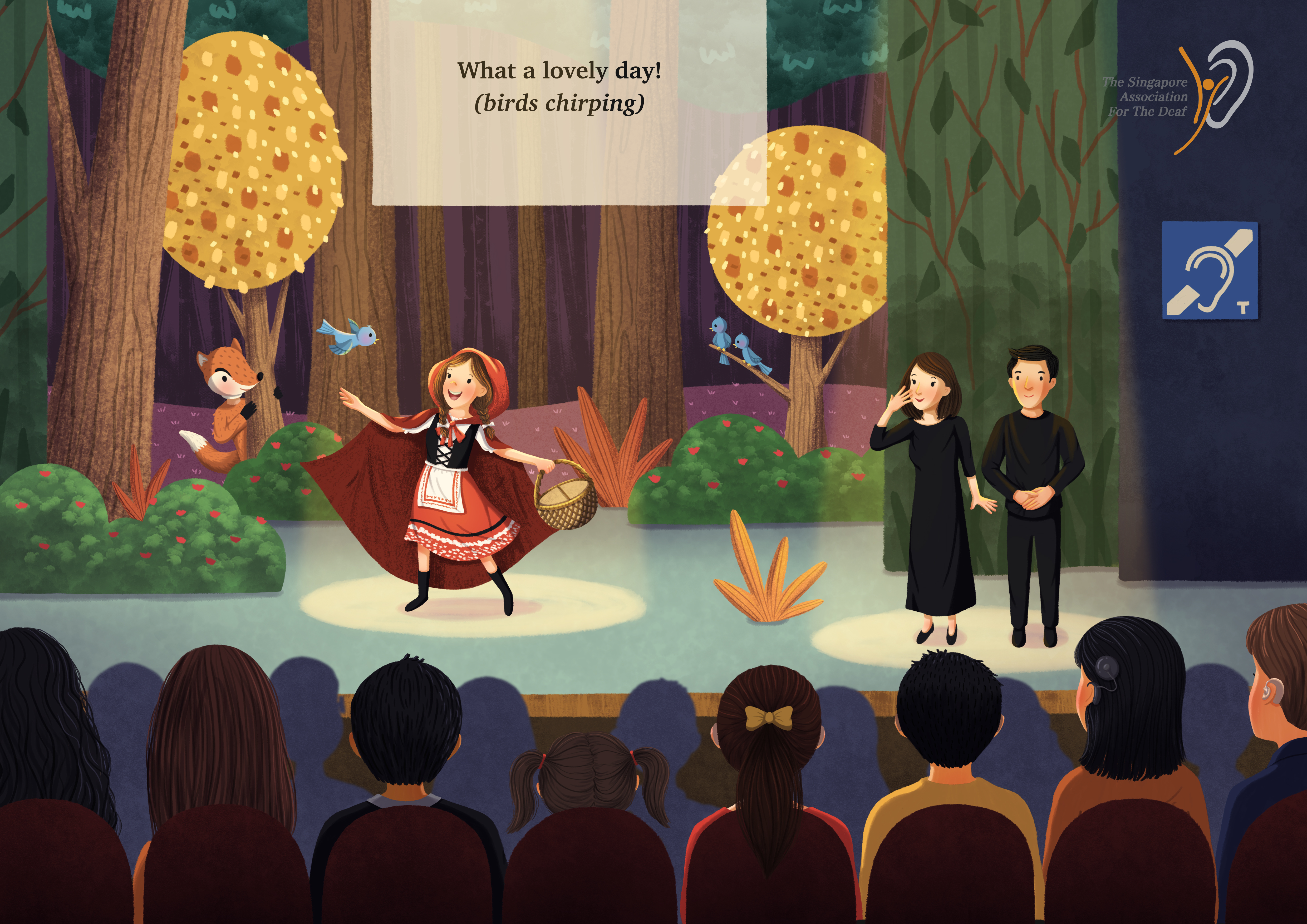Accessibility Needs for a Deaf-Friendly Show
For the Deaf and Hard-of-Hearing community, the theatre experience is not the same as it is for hearing audience. Theatre companies can improve and make their performances accessible to Deaf and Hard-of-Hearing audiences by following these guidelines.
1) Engagement of Trained Sign Language interpreters
The engagement of Sign Language interpreters should be made during the production process so that interpreters can be included in some rehearsals. The number of interpreters to be deployed depends on the intensity of the show. Two to three trained and well-rehearsed interpreters are recommended to allow turn-taking to reduce mental and physical fatigue and thereby maintaining accuracy in interpretation.
2) Placement of Sign Language interpreters
Placement of interpreters come in various styles. The most common one is as pictured in illustration A. This is a conventional style that places interpreters on the far stage-right or far stage-left and could also be on a raised platform. Sufficient space should be provided for interpreters to work comfortably without being worried over space constraints that could raise unnecessary concerns such as fear of falling or accidentally bumping into co-interpreters. It is recommended that these accommodations are considered during the production process.
3) Good Lighting on Interpreters
Lighting on the interpreters should neither be too glaring nor too dim.
Ensure that when signing, there are no harsh and distracting hand shadows cast onto the body of the interpreters. Lights should preferably be of cool beam to enable interpreters to work in comfortable conditions.
Ensure that lights do not go off completely while interpreters are signing.
The Sign Language interpretation provided should include all house announcements and any dialogues prior to and after the show.
4) Full Closed Captions
Captions provided on wall-mounted screens at the sides of the stage or at an easy-to-read location, should include:
- house announcements,
- (background sounds instrumental to the plot of the show in brackets) and
- ♪ lyrics to songs ♪.
Ensure that full closed captions are readable from the seating areas reserved for the Deaf or Hard-of-hearing patrons.
5) Provision of Hearing / Induction Loop System
It is recommended to install Hearing / Induction loop systems on-premises. The system transmits an audio signal directly to patrons with hearing aids, which reduces distortion and background noises and thus, increases clarity of sound within the covered area. The availability of such a system would provide patrons with hearing aids the choice to toggle their hearing aids, enabling direct streaming of sounds into their ears throughout the show.
6) Deaf-friendly Staff
Staff members, especially frontline staff such as front-of-house or ushers should ideally be trained in Deaf Culture and know how to attend to the Deaf or Hard-of-hearing patrons using different modes of communication. Ideally, they should be able to converse directly with Deaf or Hard-of-hearing patrons in Sign Language.
* Do explore hiring of a Deaf or Hard-of-hearing staff member for this!
7) Arranging a Good Seating Position for Deaf Audience

Well-meaning show organisers might mistakenly reserve seats too close to the interpreters for Deaf or Hard-of Hearing patrons, ending up with the interpreters blocking our view of the actors and actresses. It would also result in a lot of back-and-forth eye movement for us. When attending a show, we do not look at only the interpreters. We also need a good view of your actual show and the captions you provide! We also prefer not to have any visual interferences caused by matters such as people frequently walking in the area between us and the interpreters as this would hinder our view of the sign language interpretation for us to thoroughly understand and enjoy the show.

If Deaf or Hard-of Hearing patrons are seated too far from the stage, we will neither be able to read the sign language interpretation nor appreciate the details of the show. The Deaf or Hard-of-hearing patrons who are literate in the language of your captions also need to be seated at a distance where captions are readable.
8) Engaging Deaf Talents. They come in many forms

Deaf or Hard-of-hearing talents can be engaged for your show or in your company directly in many ways. You can engage Deaf or Hard-of-hearing talents as Crew members, Show consultants, Ushers, Actor/Actress (minor or major roles), Costume and set designers, Make-up artists, Playwrights, Dancers, Musicians, Illustrators, Graphic designers, Signers in publicity and promotional videos, and so on. The possibilities are limitless!
Illustrations by: Chen Zi Yue, Angeline, Year 2020.
Commissioned by The Singapore Association for the Deaf.
Copyrights owned by The Singapore Association for the Deaf (2020).

About the author